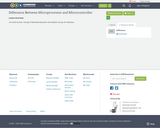
I am Amit Kumar. Faculty of Marwadi Education Doundation Group of Institution.
- Subject:
- Engineering
- Material Type:
- Lesson Plan
- Author:
- Amit Kumar
- Date Added:
- 09/27/2016

I am Amit Kumar. Faculty of Marwadi Education Doundation Group of Institution.

The goal of this article is to describe specific aspects regarding the use of e-marketing tools as a factor influencing the perception of the image of a higher education institution among its target groups. The article draws on primary data acquired through surveying respondents with the use of a questionnaire. More specifically, the analysis is based on 400 responses given by students at the Faculty of management - University of Prešov in Prešov. The crux of the article consists in examining the opinions of the respondents, concentrating on selected website elements such as design, clarity, content quality, inclusion of social elements and on selected e-marketing tools such as a Blog, Microsite, Q&A / FAQ portal, E-mail newsletter, Wiki, Online publications / eBooks, Live chat, and Mobile application. The research results have shown that there is a significant correlation between the perception of the overall image of the faculty and the evaluation of individual elements of the faculty website. The hypothesis that there is a significant correlation between the students’ attitude towards the necessity to use new e-marketing tools and the expressed evaluation of the faculty's image has not been confirmed.
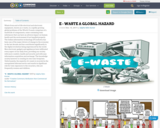
Waste from end-of-life electrical and electronic equipment, known as e-waste, is a rapidly growing global problems of the World. E-waste comprises of a multitude of components, some containing toxic substances that can have an adverse impact on human health and the environment if not handled properly. The Indian information technology (IT) industry has been one of the major drivers of change in the economy in the last decade and has contributed significantly to the digital revolution being experienced by the world. New electronic gadgets and appliances have infiltrated every aspect of our daily lives, providing our society with more comfort, health and security and with easy information acquisition and exchange. The knowledge society however is creating its own toxic footprints. Unfortunately, the majority of e-waste is recycled in the unregulated informal sector and results in significant risk for toxic exposures to the recyclers, who are frequently women and children.
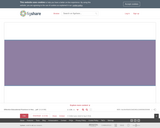
This e-book is a collection of educational projects completed by the alumni of National Teacher Training Centre (NTTC), Jawaharlal Institute of Postgraduate Medical Education and Research (JIPMER) and was published by the Alumni Association of NTTC, JIPMER in association with the Dept. of Medical education, JIPMER. The main objective of this publication is to provide an opportunity for the alumni of NTTC to share their experience with significant educational practices and interventions that worked for them in promoting knowledge, attitude and skills among their learners.
This is a free e-publication by the Alumni Association of NTTC, JIPMER in association with the Department of Medical Education, JIPMER.
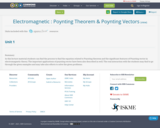
In this lecture material students can find the process to find the equation related to Poynting theorem and the significant features of Poynting vector in electromagnetic theory. The important applications of poynting vector have been also described in well. The real interaction with the students may find to go through the given examples and may take also efforts to solve the given problems.
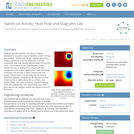
Students' eyes are opened to the value of creative, expressive and succinct visual presentation of data, findings and concepts. Student pairs design, redesign and perform simple experiments to test the differences in thermal conductivity (heat flow) through different media (foil and thin steel). Then students create visual diagrams of their findings that can be understood by anyone with little background on the subject, applying their newly learned art vocabulary and concepts to clearly communicate their results. The principles of visual design include contrast, alignment, repetition and proximity; the elements of visual design include an awareness of the use of lines, color, texture, shape, size, value and space. If students already have data available from other experiments, have them jump right into the diagram creation and critique portions of the activity.
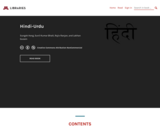
The online book project was one of two components of the Sharing the Bounty project, funded by the ACM-EMKE. This online learning/teaching material is designed for undergraduate and graduate students (and anyone in the general public wanting to retain and improve proficiency in the language) who have already acquired some knowledge and grammar of the language. The new learning/teaching online material is content-based and in line with the Communicative Teaching Approach, and effort was made to employ as many authentic materials as possible. The online book is designed for Hindi students at the Intermediate Mid/High or Advanced Low levels according to the ACTFL Proficiency Guidelines. These materials were designed to improve all-around language skills, and also to incorporate various disciplines of the target country. Four developers (Lakhan Gusain, Rajiv Ranjan, Sunil Bhatt and Sungok Hong) worked on this project and produced 12 units that cover various aspects of India, such as the Indian diaspora, women’s empowerment, politics, pop culture, health, education, travel, and so on. Students will obtain linguistic and cultural proficiency by obtaining multilateral knowledge about the country through the online book.
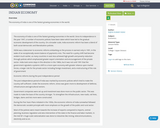
The economy of India is one of the fastest growing economies in the world.
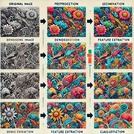
This picture describes various techniques such as preprocessing, denoising, segmentation, and more.
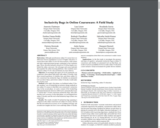
Research paper about gender-inclusivity issues found in online CS courses---an an automated tool (AID/Courseware) for detecting those issues.
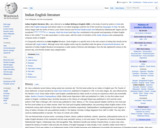
This page tells about Indian literary genius

Article On Information Technology:-

A presentation on Institutional Repositories and Open Access Movement by Rupesh Kumar A, Assistant Professor, Department of Studies and Research in Library and Information Science, Tumkur University, Tumakuru, Karnataka, India.
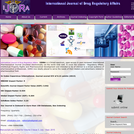
International Journal of Drug Regulatory Affairs: IJDRA is a broad-spectrum, open-access & peer-reviewed International Pharmaceutical Journal circulated electronically via the world wide web. It cover the subjects - Regulatory Affairs, Intellectual Property Rights and Pharmaceutical Development and intended to be of interest to a broad audience of pharmaceutical professionals. IJDRA now ideally placed to serve the needs of their readers and advertisers related to pharmaceutical field.
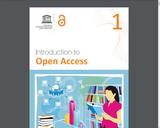
Progress of every profession, academic discipline and society at large rides on the back of research and development. Research generates new information and knowledge. It is a standardized process of identifying problem, collecting data or evidence, tabulating data and its analysis, drawing inference and establishing new facts in the form of information. Information has its life cycle: conception, generation, communication, evaluation and validation, use, impact and lastly a fuel for new ideas. Research results are published in journals, conference proceedings, monographs, dissertations, reports, and now the web provides many a new forum for its communication. Since their origin in the 17th century, the journals have remained very popular and important channels for dissemination of new ideas and research. Journals have become inseparable organ of scholarship and research communication, and are a huge and wide industry. Their proliferation (with high mortality rate), high cost of production, cumbersome distribution, waiting time for authors to get published, and then more time in getting listed in indexing services, increasing subscription rates, and lastly archiving of back volumes have led to a serious problem known as "Serials Crisis". The ICT, especially the internet and the WWW, descended from the cyber space to solve all these problems over night in the new avatar of e-journals. Their inherent features and versatility have made them immensely popular. Then in the beginning of the 21st century emerged the Open Access (OA) movement with the Budapest Open Access Initiative (BOAI). Philosophy of open access is to provide free of charge and unhindered access to research and its publications without copyright restrictions. The movement got support from great scientists, educationists, publishers, research institutions, professional associations and library organizations. The other OA declarations at Berlin and Bethesda put it on strong footings. Its philosophy is: research funded by tax payers should be available free of charge to tax payers. Research being a public good should be available to all irrespective of their paying capacity. The OA has many forms of access and usage varying from total freedom from paying any charges, full permission to copy, download, print, distribute, archive, translate and even change format to its usage with varying restrictions.
In the beginning, OA publications were doubted for their authenticity and quality: established authors and researchers shied away both from contributing to and citing from OA literature. But Committee on Publication Ethics (COPE, 1997) and its code of conduct formulated in collaboration with DOAJ and OASPA, etc. have stemmed the rot. They have defined best practices and compiled principles of transparency for quality control to sift the grain from the chaff; to keep the fraudulent at bay. Now it is accepted that contributors to OA get increased visibility, global presence, increased accessibility, increased collaboration, increased impact both in citations and applications, and lastly instant feedback, comments and critical reflections. This movement has got roots due to its systematic advocacy campaign. Since 2008 every year 21-27 October is celebrated as the OA week throughout the world. There are many organizations which advocate OA through social media and provide guidance for others.
Open Access research literature has not only made new ideas easy and quick to disseminate, but the impact of research can be quantitatively gauged by various bibliometric, scientometric and webometric methods such as h-index, i-10 index, etc. to measure the scientific productivity, its flow, speed and lastly its concrete influence on individuals, and on the progress of a discipline. The OA movement is gaining momentum every day, thanks to technology, organizational efforts for quality control and its measureable impact on productivity and further research. It needs to be strengthened with participation of every researcher, scientist, educationist and librarian. This module covers five units, covering these issues. At the end of this module, you are expected to be able to:
- Define scholarly communication and open access, and promote and differentiate between the various forms of Open Access;
- Explain issues related to rights management, incl. copyright, copy-left, authors’ rights and related intellectual property rights;
- Demonstrate the impact of Open Access within a scholarly communication environment.
This is Module One of the UNESCO's Open Access Curriculum for Library Schools.
Full-Text is available at http://unesdoc.unesco.org/images/0023/002319/231920E.pdf.

This module discuss

Iodine Clock
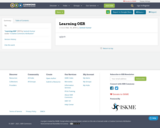
hg
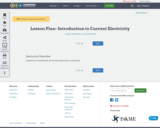
Content on introduction of current electricity in classroom
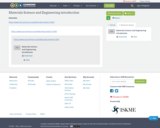
https://www.oercommons.org/editor/documents/12592